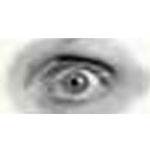
 Iridology is the study and analysis of the constitution of the iris. The iris is the eyeball. According to iridology this portion of the eye reveals the general health of an individual along with his intrinsic strengths and weaknesses alone.
Iridology is the study and analysis of the constitution of the iris. The iris is the eyeball. According to iridology this portion of the eye reveals the general health of an individual along with his intrinsic strengths and weaknesses alone.
The iris can communicate information on all the specific organs of the body and the effects of crises or chronic health challenges to each organ; tissue inflammation levels; and tissue integrity throughout the body. Iridology is a sister-science to nutrition. Each cell, tissue or organ in the body has specific identifiable nutritional needs. When the cell does not receive adequate nutritional values (due to faulty diet; poor absorption and digestion; environmental pollution; high stress levels, etc.) the iris reflects these conditions. Usually these depletions are noticeable in the iris long before they would be discernible through blood work or laboratory analysis, thus making iridology and nutritional support strong useful tools for preventative self-care. The beginnings of Iridology have been cited from many areas of the world dating back to the time of the early Chaldeans.
The first documented reference to iris analysis can be credited to the physician Philippus Meyens, who wrote a book called Chiromatica Medica, published in 1670, described the reflexive features of the iris. Soon after, other works on Iridology had begun to surface. The true birth of Iridology is said to be in 1861 presented by Dr. Ignatz von Peczely who has earned the title of the “Father of Iridology”. Dr. Von Peczely published his only book on the subject of Iridology in 1880 called, “Discoveries in the Realms of Nature and the Art of Healing”.
The Central Hypotheses of Iridology are:
(1) The iris reveals, through changes in pigment and structure, abnormal conditions of tissue in the human body.
(2) The anterior of the iris reflexly corresponds in the systematic organization of its topography to the major tissue structures the body. For example, each organ, gland and tissue is represented in a specific location in the left or right iris, or both.
(3) Organs and tissues on the left half of the body are reflexly represented in the left iris, while those of the right half of the body are represented in the right iris. Organs and tissues lying along the centerline of the body, the sagittal plane, appear in both irises, as do bilateral organs.
(4) The anterior iris, including the anterior epithelium, the stroma, the muscle layer, the pupillary margin, the autonomic nerve wreath (collarette), and the scleral-iris margin undergo specific changes corresponding to pathological changes in specific organs and tissues in the body.German medical researcher, Walter Lang, has demonstrated that the autonomic nerve fibers from virtually every gland, organ and tissue of the body extend to the thalamus and hypothalamus which monitor and respond to changes of condition in all anatomical structures.  These changes of state, Lang suggests, are relayed from the thalamus and hypothalamus through the ophthalmic branch of the trigeminal ganglion to the motorneurons of the iris muscle structure. Changes in the impulses conducted by these motorneurons may be responsible for the changes in the muscle structure of the iris, leading to the gradual separation of iris fibers in the stroma and consequent appearance of the lesions and other markings familiar to iridologist. Lang also points out that the organization of the human nervous system is genotypic, and further postulates that innervation to the iris reliably represents is also genotypic, which accounts to the fact that the iris reliable represents the same organs, glands, and other anatomical subdivisions of the body in precisely the same locations in the irises of all individuals.
These changes of state, Lang suggests, are relayed from the thalamus and hypothalamus through the ophthalmic branch of the trigeminal ganglion to the motorneurons of the iris muscle structure. Changes in the impulses conducted by these motorneurons may be responsible for the changes in the muscle structure of the iris, leading to the gradual separation of iris fibers in the stroma and consequent appearance of the lesions and other markings familiar to iridologist. Lang also points out that the organization of the human nervous system is genotypic, and further postulates that innervation to the iris reliably represents is also genotypic, which accounts to the fact that the iris reliable represents the same organs, glands, and other anatomical subdivisions of the body in precisely the same locations in the irises of all individuals.
(5) Inherent weaknesses, inherent strengths and the degree of nervous system sensitivity are shown in the iris, respectively, by the crypts and separations in the trabeculae; by closely knit trabeculae; and by parallel, curved cramp rings concentric with outer perimeter of the iris, all located in the ciliary zone outside the autonomic nerve wreath.